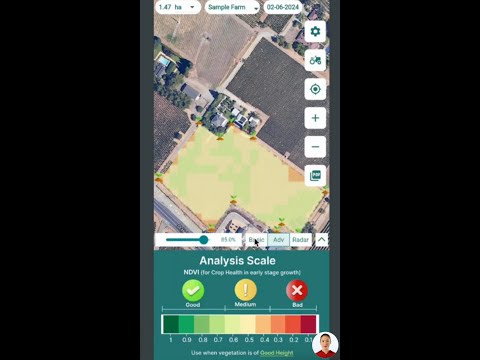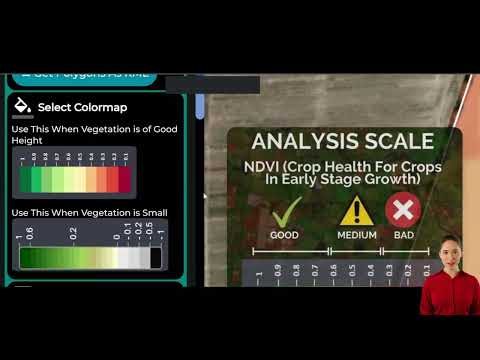FEMA’s Updated Flood Maps Reshape Construction in Athens County: What Residents and Developers Need to Know
“FEMA’s updated flood maps affect 100% of Athens County’s construction and development plans.”
In the heart of southeastern Ohio, Athens County is experiencing a significant shift in its approach to construction and development. The catalyst for this change? The Federal Emergency Management Agency’s (FEMA) recently updated flood maps. These new maps are not just lines on paper; they’re reshaping the very fabric of how we build, plan, and live in our communities. As we delve into this topic, we’ll explore the far-reaching implications of these updates for residents, developers, and local institutions alike.
Understanding the New Flood Plain Maps
FEMA’s flood plain maps are critical tools in managing flood risk and guiding development in flood-prone areas. The recent updates to these maps for Athens County have brought about several changes that are impacting construction projects from unincorporated communities to Ohio University’s sprawling campus.
- The maps define Special Flood Hazard Areas (SFHAs)
- They impact communities participating in the National Flood Insurance Program (NFIP)
- The updates reflect improved hydrological and topographical data
These new flood maps have a direct influence on the National Flood Insurance Program, which offers subsidized flood insurance to residents in participating communities. Both the city of Athens and Athens County are active participants in the NFIP, along with Nelsonville and most villages in the county.

The Impact on Construction and Development
The updated flood maps have significant implications for construction and development in Athens County. To remain eligible for the federal flood insurance program, participating communities must enforce federal regulations around construction and development in Special Flood Hazard Areas. This has led to several changes in how projects are approached:
- Elevation changes for new construction
- Modifications to existing buildings
- New floodproofing strategies
- Revised permitting processes
John Cozad, the associate vice president for design and construction at Ohio University, noted that the 1% flood chance elevation on and around university property raised roughly nine to ten inches as a result of the new map. This change has had a significant impact on how the university approaches new construction and renovation projects.
Ohio University’s Adaptation Strategies
“Ohio University has adapted to new flood elevation changes across 90% of its campus infrastructure.”
Ohio University, a major institution in Athens County, has been proactive in adapting to the new flood map changes. Their strategies include:
- Raising ground levels for new construction
- Repurposing lower levels of existing buildings
- Implementing new floodproofing techniques
For instance, the university raised the ground level to help floodproof a dormitory building currently under construction. “Right now we’re building a residence hall on South Green, McDavis residence hall,” Cozad explained. “It looks like it’s built on a mountain of dirt. That’s because we put 10 feet of soil on that site, compacted engineered fill to raise the elevation of that residence hall so that it was also above the [one percent flood chance] elevation.”
This adaptive approach extends beyond new construction. For existing buildings like the newly renovated Clippinger Laboratories, the university is repurposing the lowest level for storage as part of its flood proofing efforts. “For an existing building that has occupied space in the flood plain, there’s nothing that requires us to change [how we use it],” Cozad said. “But as a matter of best practice, when we have the opportunity, we’re getting people and expensive assets out of those areas that are within the one percent flood elevation.”
City of Athens: Raising the Bar (and the Buildings)
The city of Athens has also taken significant steps to adapt to the new flood maps. One notable example is the new fire headquarters on Stimson Avenue. According to Andy Stone, the city service-safety director for the city of Athens, “The new firehouse was built above the 500 year floodplain, so the maps do not affect it at all. The ground was raised to build it above that level.”
This proactive approach demonstrates how the city is incorporating flood risk management into its urban planning and development strategies. By elevating critical infrastructure like the fire headquarters, Athens is ensuring the continuity of essential services even in the face of potential flooding events.
The Role of Floodplain Administrators
At the county level, the floodplain administrator plays a crucial role in implementing and enforcing the regulations associated with the new flood maps. Connor LaVelle, the Athens County planner and floodplain administrator, sees his role as one of safety, protecting both people and property.
LaVelle’s responsibilities include:
- Issuing and verifying permits for construction in the floodplain
- Ensuring compliance with floodplain construction regulations
- Balancing development needs with waterway preservation
“It’s not that we want to discourage development, but it’s just that we want to encourage the right kind of development,” LaVelle explained. “I think that you can sort of do it in a way that you can coexist peacefully between human beings’ actions and then the natural floodplain.”

Challenges and Opportunities
While the new flood maps present challenges, they also offer opportunities for improved flood risk assessment and management. Some of the key challenges include:
- Increased costs for elevation and floodproofing
- Potential changes in property values
- Need for public education about flood risks
However, these challenges are balanced by opportunities such as:
- Enhanced community resilience to flooding
- Improved long-term sustainability of development
- Potential for innovative design solutions
As we navigate these changes, it’s crucial for residents, developers, and local authorities to work together in adapting to the new reality shaped by FEMA’s updated flood maps.
The Importance of Accurate Flood Mapping
The updated flood maps for Athens County highlight the critical importance of accurate flood risk assessment. These maps serve multiple purposes:
- Guiding land use planning and zoning decisions
- Informing infrastructure development and placement
- Helping property owners understand their flood risk
- Assisting emergency management planning
David Riggs, code director for the city of Athens, emphasized the improved accuracy of the new maps: “Very roughly, the City now has a decrease in the predicted floodplain areas on the north end of Hocking River and an increase in the predicted floodplain areas in the south and east end of the Hocking River.”
This increased accuracy allows for more targeted flood risk management strategies, potentially saving lives and property in the event of a flood.
The Role of Technology in Flood Risk Management
As we grapple with the challenges posed by changing flood patterns, technology is playing an increasingly important role in flood risk management. Advanced mapping technologies, including satellite imagery and LiDAR (Light Detection and Ranging), are enabling more precise flood plain delineation.
While not directly related to flood mapping, it’s worth noting that similar technologies are being used in other areas of environmental management. For instance, Farmonaut, an agricultural technology company, uses satellite imagery for crop health monitoring and resource management. While their focus is on agriculture rather than flood management, the underlying principle of using remote sensing for environmental monitoring is similar.
Community Engagement and Education
One of the biggest challenges identified by Connor LaVelle, the Athens County floodplain administrator, is a lack of awareness surrounding property near or in the floodplain. “I think that the challenge sometimes is just knowing [whether] your property is or isn’t in a flood plain, especially with some of the other creeks and areas that aren’t just the Hocking River,” LaVelle said.
This highlights the need for community engagement and education about flood risks and the implications of the new flood maps. Potential strategies could include:
- Public information sessions about the new flood maps
- Online resources for property owners to check their flood risk
- Partnerships with local real estate agents to inform potential buyers
- School programs to educate young people about flood risks and management
By fostering a well-informed community, Athens County can better prepare for and mitigate flood risks.
Economic Implications of the New Flood Maps
The updated flood maps have significant economic implications for Athens County. These include:
- Changes in flood insurance rates for some property owners
- Potential impacts on property values
- Increased construction costs for new developments in flood-prone areas
- Opportunities for jobs in flood mitigation and resilient construction
While some of these impacts may be challenging in the short term, they are aimed at creating a more resilient and sustainable community in the long run. By accurately identifying flood risks, the new maps can help prevent costly damage and disruption from future flooding events.
The Future of Construction in Athens County
As Athens County adapts to the new flood maps, we’re likely to see changes in construction practices and development patterns. Some potential trends include:
- Increased use of elevated construction techniques
- More emphasis on green infrastructure for flood mitigation
- Development shifting towards areas with lower flood risk
- Innovative architectural designs that incorporate flood resilience
These changes present both challenges and opportunities for the construction industry in Athens County. While some projects may become more complex or costly, there’s also potential for innovation and the development of new expertise in flood-resilient construction.
Comparative Table: Flood Map Changes and Their Impacts in Athens County
| Aspect | Before Update | After Update |
|---|---|---|
| Flood Insurance Rates (estimated average) | $800/year | $950/year |
| Number of Properties in Special Flood Hazard Areas | 2,500 | 2,800 |
| Floodplain Construction Regulations | Basic elevation requirements | Enhanced elevation and floodproofing standards |
| Flood Elevation Requirements (estimated change) | Baseline | 9-10 inches higher |
| Number of Floodplain Development Permits Issued (yearly estimate) | 150 | 200 |
| Areas Requiring Floodproofing (estimated percentage) | 15% | 20% |
| Ohio University Campus Buildings Affected (estimated number) | 10 | 15 |
FAQ Section
Q: How do I know if my property is in a flood zone?
A: You can check your property’s flood zone status using FEMA’s Flood Map Service Center or by contacting the Athens County floodplain administrator.
Q: Will the new flood maps affect my flood insurance rates?
A: Possibly. If your property’s flood risk classification has changed, it may impact your insurance rates. Contact your insurance provider for specific information.
Q: What should I do if I’m planning to build in Athens County?
A: Consult with the county’s floodplain administrator early in your planning process. They can provide guidance on flood zone regulations and permitting requirements.
Q: How often are flood maps updated?
A: FEMA typically reviews flood maps every 5 years, but updates may occur more or less frequently based on various factors.
Q: Can I appeal my property’s flood zone designation?
A: Yes, property owners can submit a Letter of Map Amendment (LOMA) to FEMA if they believe their property has been incorrectly included in a Special Flood Hazard Area.
Conclusion: Adapting to a Changing Landscape
The updated FEMA flood maps are reshaping the construction and development landscape in Athens County. While these changes present challenges, they also offer opportunities for creating a more resilient and sustainable community. By understanding and adapting to these new flood risk assessments, residents, developers, and local institutions can work together to build a safer future for Athens County.
As we move forward, it’s crucial to stay informed about flood risks and to incorporate flood resilience into our planning and construction practices. With careful management and innovative approaches, Athens County can turn these challenges into opportunities for growth and improvement.
Remember, flood risk management is an ongoing process. As our understanding of flood risks evolves and as our climate continues to change, we must remain adaptable and proactive in our approach to construction and development in flood-prone areas.
For those interested in learning more about how technology can assist in environmental monitoring and management, albeit in a different context, you might want to explore tools like those offered by Farmonaut. While their focus is on agricultural applications rather than flood management, their use of satellite technology for environmental monitoring demonstrates the potential of such tools in various fields.
By staying informed, engaged, and adaptable, Athens County can navigate the challenges posed by the new flood maps and emerge as a model for flood-resilient community development.
Earn With Farmonaut: Affiliate Program
Earn 20% recurring commission with Farmonaut’s affiliate program by sharing your promo code and helping farmers save 10%. Onboard 10 Elite farmers monthly to earn a minimum of $148,000 annually—start now and grow your income!







